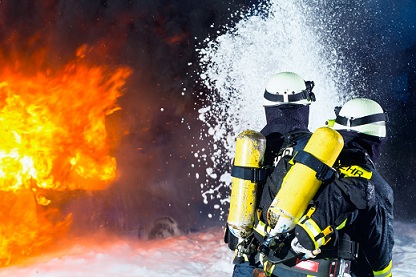Bridging the information gap in crisis response

date: 24/03/2014
Project: Bridging resources and agencies in large...
acronym: BRIDGE
See also: CORDIS
Contact: http://www.bridgeproject.eu/en /
Update, December 2015
BRIDGE’s contribution to better crisis management includes a software platform that allows emergency responders using incompatible communication systems to share information over ad-hoc networks.
The platform brings together and orchestrates the management of data during a disaster. This “system of systems” would allow responders using different devices and software to:
- establish short-range communication networks;
- monitor the environment and receive a live overhead view of incidents using drones with multiple sensors;
- tag victims according to their injuries using electronic triage bracelets;
- tag and monitor significant locations at a disaster site;
- receive alerts from victims using smartphones with a specially developed app.
BRIDGE also developed training modules and tools to improve crisis management. The project team also identified the organisational and legal requirements to be met to successfully implement these services.
BRIDGE’s system of systems was tested during four demonstrations with participating emergency responders – two in in Norway, one in Austria and one in Switzerland. Long-term evaluations in real life conditions were also carried out for ambulance services in two Norwegian cities.
With the project having ended in June 2015, it’s now up to industry and emergency services to bring BRIDGE’s concepts and technologies to the market, says project coordinator Dag Ausen of SINTEF, a research institute in Norway.
And some of the industrial partners involved in the project plan to take up the challenge, he adds. Ausen has also made presentations to companies interested in the technologies developed through BRIDGE.
Text on Bridge from 2014
Better communication technologies help save more lives
An earthquake, a terrorist attack, a fire in a tunnel – it takes a special kind of person to rescue survivors from large-scale emergencies. But first response teams don’t rely just on their outstanding courage and skill to operate effectively. They also need information and coordination, and a way to communicate. EU-funded research is improving the ICT systems at their disposal.
The BRIDGE project, co-funded by the European Union, aims to develop technical and organisational solutions that will take crisis and emergency management another step ahead. With another year to go before the project ends, the partners have already engineered and tested a number of powerful new tools and systems – and further innovations are under way.
“We are developing tools so that all responders to an incident can access and share the same information,” says Dag Ausen of project coordinator SINTEF, “even when the communication infrastructure is damaged.” Examples include a training system, an unmanned aerial vehicle system, a help beacon application by which victims can send an SOS to first responders at the scene, and electronic triage bracelets that combine into a short-range communication network.
Many teams, one system
In a disaster scenario, first responders must be able to act quickly and efficiently. At all levels, from technical to organisational, saving lives depends on good decision making and excellent coordination – within and among the various first response teams that are involved.
The key to effective intervention, the BRIDGE partners say, lies in establishing interoperability, harmonisation and cooperation among the stakeholders, such as the police, the fire brigade, emergency medical services and voluntary organisations. Compatibility in terms of communications and organisational structures can be a matter of life and death.
BRIDGE is developing solutions to ensure that multiple response teams are on the same page. These include a set of ICT tools and applications and a system based on open standards that can integrate these and other tools used by first responders.
The partners intend to deliver new communication network infrastructures designed in view of the requirements evolving from emergency scenarios, including hardware and software to support the integration of data sources, networks, and other emergency-related system.
Reliable, flexible solutions
While technical interoperability is crucial, says Ausen, improving multi-agency collaboration will only work if new communication technologies can be integrated and sustained within existing agency workflows and communication processes. Thus, the project is also working on new methods and tools to support real-time intra- and inter-agency collaboration, including scenario-based training.
The BRIDGE project involves a balanced team of cross-disciplinary academics, technology developers, domain experts and end-user representatives. To ensure that the proposed solutions tie in with the needs of first response teams, the partners have established a ‘User Advisory Board’ that guarantees active end-user involvement throughout the project.
The potential benefits of the BRIDGE system are clear in terms of aiding victims of large-scale catastrophes, but Ausen says that it could also create a new market for innovative products and services, based on open standards for communication. “Today this market is mainly closed, very conservative and difficult to get access to,” he notes.
“All partners in the project will use the results in their current businesses,” Ausen adds, “and some concrete products and services will be moved forward to market.” These include, he says, a new system for electronic triaging of victims and a system for resource management and the establishment of common situational awareness.
BRIDGE, says Ausen, represents a real contribution to more efficient and effective response to natural catastrophes, technological disasters and large-scale terrorist attacks. “The results of the project could affect anyone involved in such an incident, giving first responders better tools to save more lives and property.”
